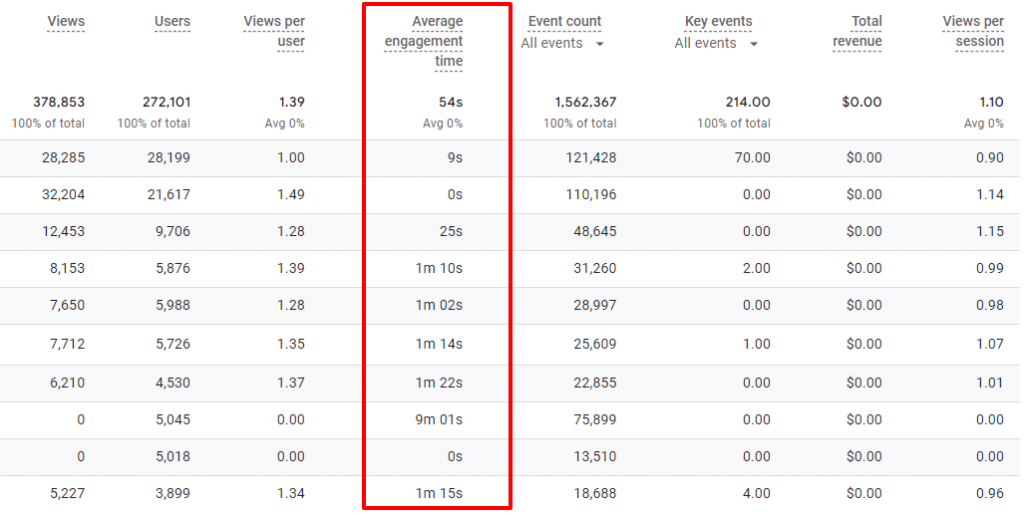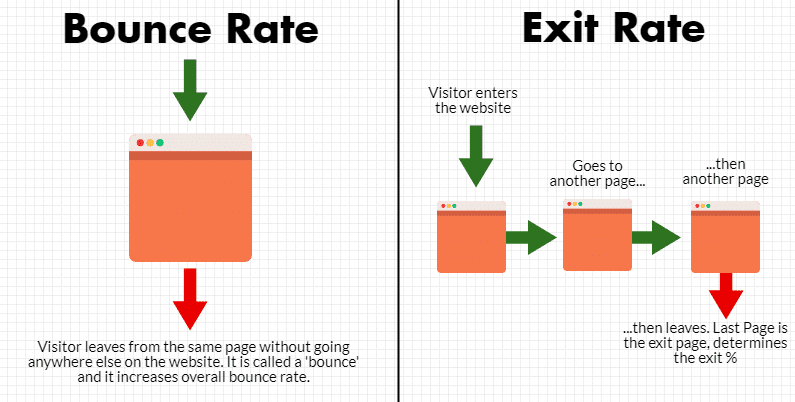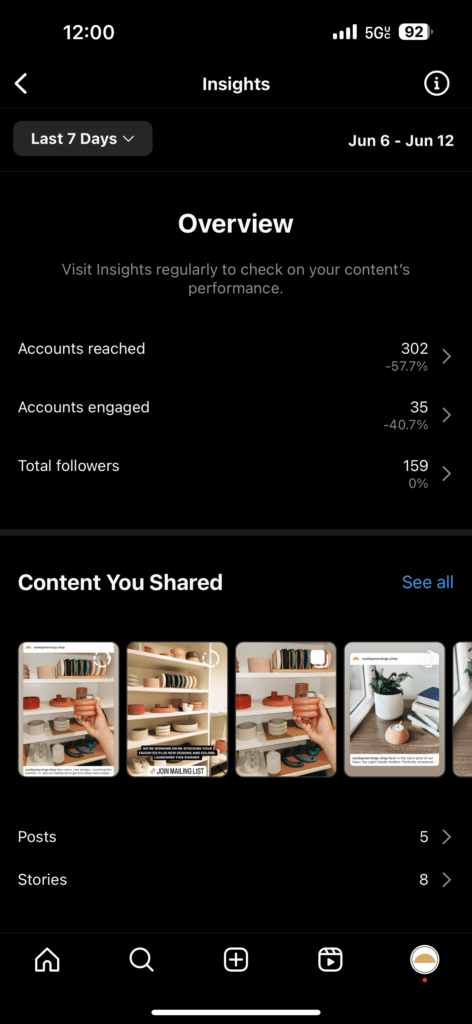No matter the type or size of your business, when you seek the most effective strategies to maximize your results, you’ll undoubtedly come across Content Marketing.
Content Marketing is an approach centered around creating tailored and persona-focused materials to draw visitors to your digital channels.
This strategy has proven its effectiveness and offers remarkable flexibility, accommodating various formats and encouraging creativity.
However, it doesn’t work alone. To make it work, you need a solid grasp of its fundamental concepts and the ability to measure its results. That’s where the concept of Content Engagement comes into play.
For every digital marketer, understanding the importance of creating content with high engagement potential is crucial. Moreover, they must learn how to seamlessly integrate it into their strategy and employ tactics to encourage leads to engage with their brand materials.
With these objectives in mind, let’s use this text to provide answers to the following questions:
Keep on reading!
What Is Content Engagement?
Content Engagement refers to users’ actions when interacting with content in a broader sense.
It allows us to track and monitor how the materials we publish on the internet reach our intended audience.
You can think of Content Engagement as a signal sent by users, indicating that, in some way, the content was relevant to their experience. The way this signal is sent varies depending on the platform.
For instance, on Instagram, followers can like, comment, share a post, respond to polls in Stories, or react to a video on IGTV.
By taking any of these actions, individuals initiate a dialogue with the brand and, most importantly, express their interest in more similar content.
Aside from social media interactions and sharing posts, other common forms of engagement include clicking on links and commenting on blogs.
Of course, the relevance of different engagement types depends on your strategy’s objectives.
The central point here is that this interaction establishes a connection between the brand and the consumer, often in subtle ways. Subconsciously, individuals begin associating the company with the value provided by the content experience, fostering extremely loyal and enduring relationships.
Additionally, we can’t overlook the role of algorithms that organize online content, aiming to display the most relevant materials to each user.
Why Is Content Engagement Important?
When a consumer engages with a post from your brand, they are signaling to Google, for example, that they would like to see more content of that kind.
This makes it evident that Content Engagement is a fundamental asset for SEO strategies, which aim to position the company’s materials at the top of search engine results.
However, it’s important to note that this shouldn’t be the sole focus of your strategy.
Currently, Content Engagement plays a significantly more crucial role in the buyer’s journey. Modern consumers prioritize interactions with brands that provide experiences they consider valuable.
Therefore, it’s necessary to go beyond techniques solely aimed at meeting algorithm requirements. The emphasis should be on the user experience itself.
After all, the more consumers enjoy your content, the more likely they are to return to your channels.
This necessity to create original and engaging content, designed to attract and retain consumers, has given rise to new trends. Today, a top Content Marketing strategy includes a wealth of interactive materials and unique experiences.
Interactive marketing and live experiences are examples of approaches that create highly engaging situations for consumers, generate data to optimize strategies, and position the brand as an authority on the subject.
Do you believe your content strategy is efficient, or do you see room for improvement?
It’s impossible to provide the right answer without properly measuring your engagement rates. To learn more about this, proceed to the next topic.
How to Measure Content Engagement?
The key to the success of any content strategy is its permanent monitoring.
From a data-based culture, it is possible to identify ways to optimize the strategy by fixing a problem or introducing new techniques.
Therefore, to do this effectively, it is necessary to work with tools that enable data collection and analysis, such as Google Analytics. With them, you can access important information about users’ interactions with your materials, but you need to know what you are looking for.
On websites, for example, one of the most relevant engagement metrics is the average time spent on page, provided by Analytics.
It indicates, on average, how much time users spend on each page of your site. If the time is too short, your content is not compelling enough.

With this data in hand, you can compare your top performer pages and find the elements that make their success possible, replicating them strategically.
If we are talking about a blog, you may well notice that pages containing images, videos, and other visual elements achieve better results than others.
Another KPI that should receive great attention is the exit rate of your pages. Different reasons may lead the visitor to leave your website, but an exit rate that is too high may indicate that this specific content is failing in the mission of keeping the user engaged.

The goal is, after all, to maintain a high level of internal traffic, which occurs when the user consumes several contents in sequence.
This situation shows that your strategy is having an effect in creating a positive connection with your lead.
Social media engagement
Although creating a website for your agency is fundamental, you need to be present in other channels, such as social media. They are excellent channels to expand your reach and engage your audience using a variety of post formats.
Besides, they are excellent for measuring your content engagement.
Instagram, Facebook, Twitter, and LinkedIn: all these platforms feature their own analysis tools, which generate relevant data on consumer behavior.
When analyzing a specific post, you can see how many (and which) actions were taken from it.

When analyzing your social media content’s engagement, remember that each of them has its own characteristics.
On Facebook, for example, a like in a post is an engagement action usually dismissed by most marketers. This is because many people like posts on this network without actually consuming them.
That’s why, for companies that work with a Facebook-focused strategy, it makes much more sense to track the number of times a content has been shared.
How to Use Content Engagement In Your Strategy?
After measuring your Content Engagement, it’s time to apply the information collected to improve the results of your strategy.
The simplest way to achieve this is by identifying standards in successful materials.
As we have said, content that presents visual resources usually performs better, but, during the analysis process, you will notice other characteristics that stand out from the others.
Contents that bring interactivity elements, for example, tend to be much more engaging than static content.
By perceiving these patterns, you can optimize your other content to make them more appropriate to your consumers.
To make the whole process more solid, be sure to use A/B tests. They allow you to compare the variables of your content, making clear which options are more appropriate.
Imagine that you are planning an email marketing campaign to announce a new item in your e-commerce.
In this case, the content is the email message, and your goal is to make the recipient click on the link and visit your virtual store, right? But how do you ensure the best approach?
By running A/B tests, you can test different versions of the same content and identify the most appropriate.
Should the title be more or less formal? Should you use gifs in your message? How should the design be? What kind of CTA has more chances to convert the buyer persona?
Measuring and applying improvements to your content is a long process, but it brings extraordinary results.
With the application of the best techniques, it is possible to boost your Content Engagement and generate an audience increasingly involved with your brand. Read on to learn more!
What Are the Best Hacks to Improve Content Engagement
The content you create faces vast competition on the internet, right? But don’t worry!
With a solid strategy, it’s viable to spotlight your brand and become a reference in your niche.
For this, it is necessary to understand how the consumer thinks and encourage their engagement.
Build trust around the brand
In the current market model, the client is at the top of the hierarchy. They have the power to choose between several options when searching for a product on Google, for example.
In this decision process, one thing that the user takes into consideration is the brand reputation.
So it is important to invest in branding efforts to build trust around your business.
A Content Marketing strategy can be effective in this sense, as long as you can position yourself as the subject’s authority. The idea is not to promote the service itself but to show that the client can count on you.
So, you should consistently produce quality content, making the public acquainted with your brand, your visual identity, and your channels.
This way, when seeing your content on the internet, the user will have more reasons to consume it.
Know your audience
The internet audience is vast and diverse, making it impossible to please everyone.
Therefore, your content production should focus on the audience that is significant to your company: the people with the potential to become clients. That’s why it’s essential to define a buyer persona.
The persona is a character created to represent your ideal consumer and serves as a guide for strategic decisions on your content production.
The persona’s attributes must be taken into account when deciding the channels you will occupy, the style of language you will use, etc.
This way, you will provide experiences with great value to the consumer, boosting their will to engage.
Offer quality experiences
More and more, the production of content on the internet focuses on creating experiences.
Take as an example the various live performances that became famous during the period of isolation due to Covid-19. Many brands have sponsored these virtual events to engage their followers on social networks.
By the way, this kind of live experience is a very strong trend in the digital environment. More connected, the modern internet user searches for new information practically all the time.
This situation leads many companies to invest in live blogging tools to ensure higher engagement rates.
Another interesting idea is to hold other types of events over the Internet, such as lectures, courses, interviews, etc.
With a good live stream tool, you can gather a huge audience in an environment extremely favorable to engagement.
Use interactive content
Finally, be sure to invest in interactive content across your different channels.
Besides being excellent for educating the buyer persona, collecting customer data, and boosting your sales, interactive materials achieve incredible engagement rates. After all, they are designed around the stimulus to interaction.
Think, for example, in an ebook. In the traditional format, the reader consumes all the content without interacting with it in any way. It’s a one-way conversation.
However, you can add elements such as quizzes and calculators to make the ebook interactive. You can then create several points of engagement throughout the reading.
Want an example? Take a look at this Rock Content ebook. Notice how, from a rich, concise design, the material offers an interactive user experience, allowing the reader to choose the order of reading and navigate through the document with greater freedom.
Content Engagement is a central piece in any internet marketing strategy, but only high-quality content has the potential to generate engagement.
That’s where WriterAccess comes into play. Our network of experienced content creators can help you achieve the engagement you desire in no time.
What’s even better? You can try it free for 14 days to see the results for yourself.
Start creating interactive content with Ion and increase your marketing results!
Start creating interactive content with Ion and increase your marketing results!









